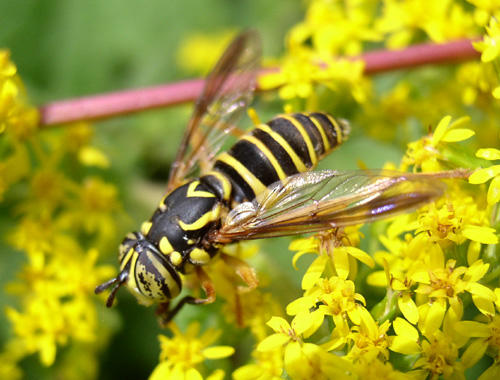
Unlike most other insects on this list, honey bees can only sting a target once and they die shortly after. Honey bees rarely sting unless provoked – usually if they feel the colony is threatened and when they do, they attack in large numbers. For a trained expert, bee colonies can be quickly removed and then relocated to work as crop pollinators. Instead, contact a bee removal expert who can capture the queen and put the colony to good use. If you have a bee colony you want to get rid of, an exterminator is not the best answer. A hive, however, should be dealt with especially if it’s not under the control of a beekeeper or too close (or inside!) to a home. Individual bees should not be considered a threat – they’re just looking for nectar to make honey. HONEY BEE FACTS: These bees were introduced to North America in the 1600s and spread throughout the continent and into South America shortly thereafter.
#BIG BLACK BEE WITH YELLOW HEAD PROFESSIONAL#
Contact a professional beekeeper, not an exterminator, for assistance in this. Alternating yellow and brown or black stripes.ĪLERT!:These insects are considered key pollinators within their ecosystem (and for farming, too) it’s best to relocate these bees rather than kill them. “Wild” honey bees are found in tree hollows, small caves and little-disturbed objects created by humans, including hollows of walls, unused cars and empty crates.Īppearance:Slightly fuzzy bodies. Nest Locations:These domesticated bees are commonly based in a commercial hive – usually a wood box located near cropland or orchards.

Having a yard gives you an opportunity to get outdoors and enjoy the sunshine, fresh air and plants.


 0 kommentar(er)
0 kommentar(er)
